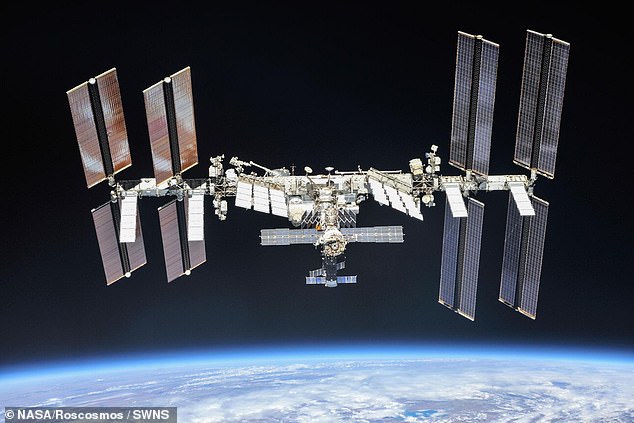Panic in space as astronauts on NASA’s ISS report ‘toxic odor’ and ‘risk of contamination’
Astronauts aboard the International Space Station (ISS) panicked after a cargo ship arrived with a “toxic odor” and “possible contamination in the form of droplets.”
Progress 90 docked with Russia’s Poisk module at 9:31 a.m. ET on Saturday, and Roscosmos cosmonauts identified an odor immediately after opening the hatch.
The Russian crew quickly donned protective gear and activated an additional air-wash system aboard their segment of the ISS for about 30 minutes.
NASA astronaut Don Pettit also reported a “spray paint-like” odor in the US segment’s Node 3 module, but it was not immediately clear whether it came from Progress.
“Space station air scrubbers and contaminant sensors monitored the space station atmosphere following the observation, and on Sunday flight controllers determined that air quality on the space station was at normal levels,” NASA shared in a statement.
The agency further explained that as of Sunday afternoon there are no concerns for the crew, but the hatch between the Russian modular and cargo vessel remains closed.
Progress 90 arrived at the Russian Poisk module at 9:31 a.m., delivering three tons of food, fuel, and supplies for members of the Expedition 72 crew aboard the ISS.
Progress 90 docked with Russia’s Poisk module at 9:31 a.m. ET, and Roscosmos cosmonauts identified an odor immediately after opening the hatch. NASA said the crew has yet to reopen the hatch
NASA reported that the U.S. side of the orbiting laboratory also activated its own air-washing system, while the hatch to the Russian Poisk module remained closed.
While Russian media reported a toxic odor, NASA told a different story.
“After opening the hatch of the Progress spacecraft, the Roscosmos cosmonauts noticed an unexpected odor and observed small droplets, prompting the crew to close the Poisk hatch for the rest of the Russian segment,” it shared desk at X.
Progress 90 is expected to remain docked for about six months before returning to Earth.
The “toxic odor” comes just months after a report revealed that the space agency and its Russian counterpart, Roscomos, are monitoring 50 “points of concern” linked to a growing leak aboard the space station.
NASA called the cracks in a Russian service module a “top security risk,” raising its threat rating to five out of five.
Although officials have been aware of the problem since 2019, the exact source of the leak is still unknown.
All potential cracks have been covered with ‘a combination of sealant and band-aids’, but NASA warned that the leak reached its fastest rate yet in April this year.

Both the American and Russian sides of the ISS activated their air purification systems after the toxic odor was identified
Concerns about the station’s safety are now so great that NASA has negotiated with Roscomos to open the hatch only when necessary and keep it closed at night.
And that’s not the only cause for concern, as the space agency has warned that the ISS is at risk of being pelted with micrometeors and space debris.
The air leak is located in Russia’s Zvezda Service Module Transfer Tunnel, installed in 2000, and is used to house life support equipment and access a Russian cargo dock.
In 2019, it was noticed that the module started leaking a small amount of air through an unknown crack.
Despite efforts to seal the module, the amount of air escaping from the station has only increased over the past five years.
In February this year, NASA was forced to hold a press conference on the issue as the amount of air escaping temporarily increased from 0.09 kg to 1.08 kg per day.
A report published in September by NASA’s Office of the Inspector General (OIG) confirmed that the leak reached a record number in April, losing 1.68 kg of air every day.
This has prompted the space agency to escalate its threat rating to the highest level and consider evacuation plans.
In May and June, NASA officials traveled to Russia to discuss “heightened concerns” about the apparently growing leak.
Speaking to the Washington Post, NASA Administrator Jim Free said: “We have made clear the seriousness of the leaks several times, including when I was in Russia earlier this year.
“We have reached a compromise that they close it in the evening.”
The OIG report states, “The Service Module Transfer Tunnel leak does not pose an immediate risk to the structural integrity of the station, and there are no current concerns about long-term impacts to the overall structure.”
Similarly, ISS program manager Joel Montalbano told a press conference in February that the leak “had no impact on crew safety or vehicle operations at this time, but is something everyone should be aware of.”
